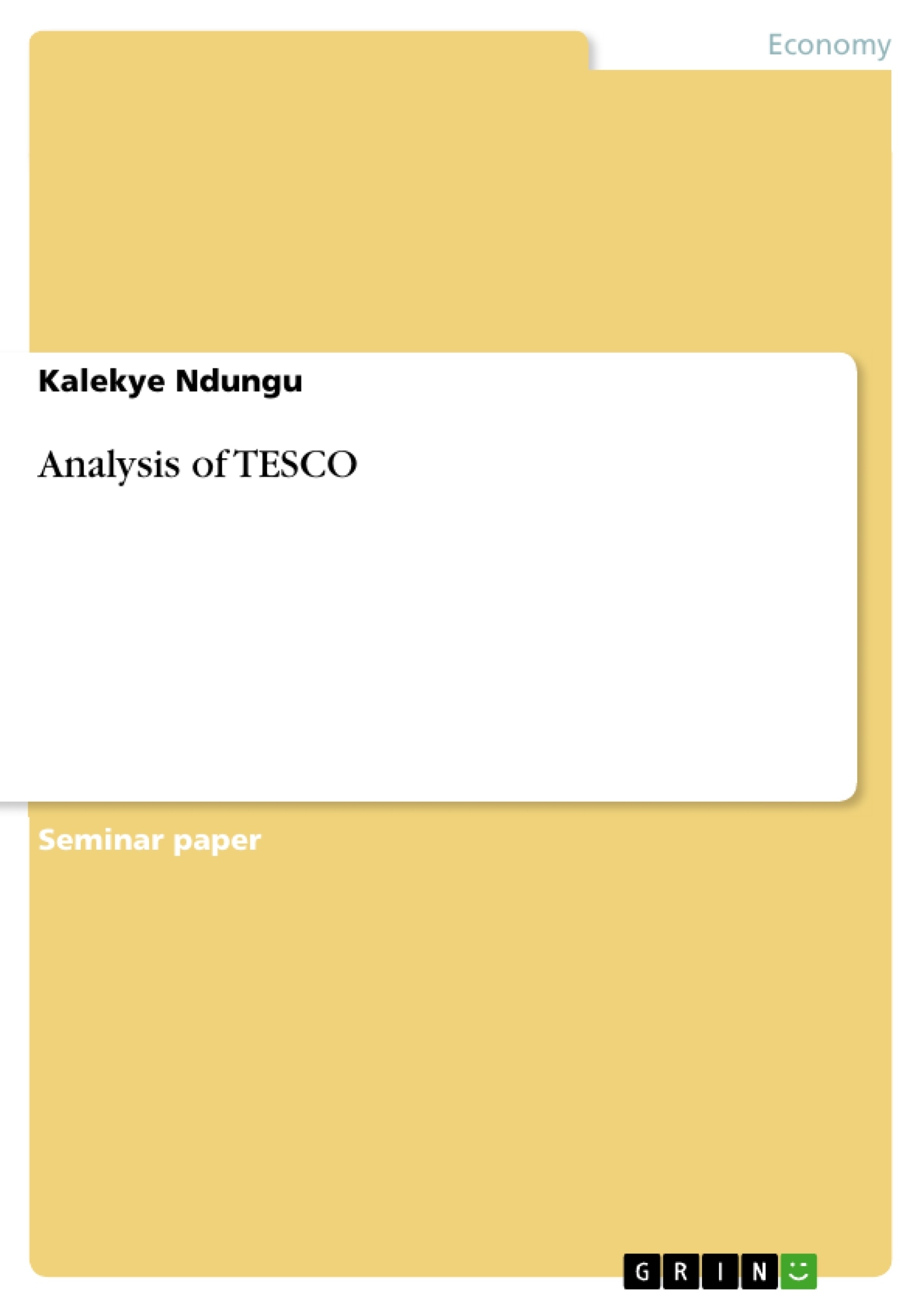Tesco is known as the one of the biggest supermarket chains in the U.K. The company is having the more than 2000 stores in the U.K alone and has about 2500 stores in the whole world. The company was founded by John Cohen in 1919 with the small market stall In London. Now, the company has added over 53000 employees across the world and catering to over tens of millions of customers in a single week. The company is having the operations in 12 countries across the world (Tesco).
Tesco is having the largest market share in comparison with all the other grocery retailers in the same country such as ASDA, Waitrose, Sainsbury’s and Morrisons. The company is having the strong market share of 30.7% against ASDA 17.3%, Sainsbury’s 15/9% and Morrisons 11.7%.
The business of the company is segmented into two parts one is supermarket retail sales stores and the other is Tesco bank. The major portion of the company’s revenue is coming from retail stores spreading across the regions such as U.K, Asia and the Europe (Tesco 2013).
Table of Contents
- Company Background-Tesco
- Tesco Performance in 2012-13 (on the continuing operational basis)
- Macro-Economic Situation
- Inflation Rate
- GDP Rate
- Exchange Rates
- Public Spending
- Porter's Model of Five Forces Analysis
- Threat of New Entrants
- Bargaining Power of the Suppliers
- Bargaining Power of Buyers
- Intensity of Competitive Rivalry
- Threat of Substitute Products and Services
- PESTEL Analysis
Objectives and Key Themes
This text analyzes the competitive environment of Tesco, a leading supermarket chain in the UK. It explores the company's performance, market share, and strategic direction. The analysis incorporates macro-economic factors influencing the retail sector, including inflation, GDP growth, exchange rates, and public spending. The text then applies Porter's Five Forces Model to assess Tesco's competitive position in the supermarket industry. It concludes with an overview of PESTEL analysis, a framework used to evaluate macro-environmental factors impacting the company's operations.
- Tesco's competitive advantage and market position in the UK retail sector
- Macro-economic influences on the grocery retail industry
- Application of Porter's Five Forces Model to analyze Tesco's competitive landscape
- Analysis of Tesco's strengths, weaknesses, opportunities, and threats (SWOT)
- The role of PESTEL analysis in identifying key environmental factors affecting Tesco
Chapter Summaries
The text begins with a description of Tesco's background, highlighting its size, global presence, and market share in the UK. It then examines the company's performance in 2012-13, outlining sales growth, profitability, and capital expenditure. The text then delves into the macro-economic situation, examining inflation, GDP growth, exchange rates, and public spending as factors impacting the UK retail sector. The heart of the text lies in the application of Porter's Five Forces Model to analyze Tesco's competitive position. The model assesses the threat of new entrants, bargaining power of suppliers and buyers, intensity of competitive rivalry, and the threat of substitute products. Finally, the text discusses the importance of PESTEL analysis in understanding the macro-environmental forces that influence Tesco's operations.
Keywords
Tesco, supermarket, retail, UK, market share, competitive advantage, Porter's Five Forces, PESTEL, macro-economic factors, inflation, GDP growth, exchange rates, public spending, bargaining power, threat of substitutes, SWOT analysis, competitive environment.
- Quote paper
- Kalekye Ndungu (Author), 2011, Analysis of TESCO, Munich, GRIN Verlag, https://www.grin.com/document/267043



